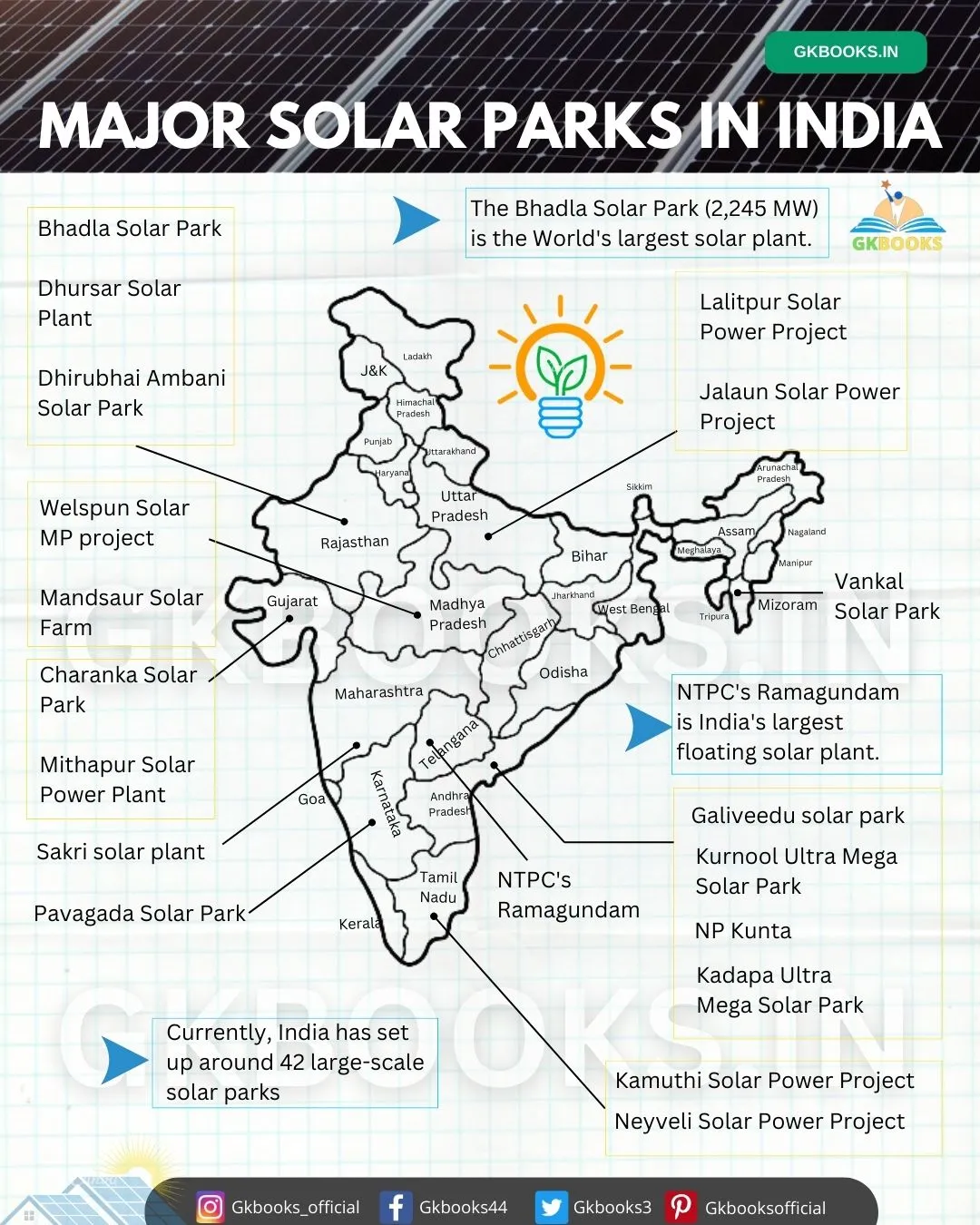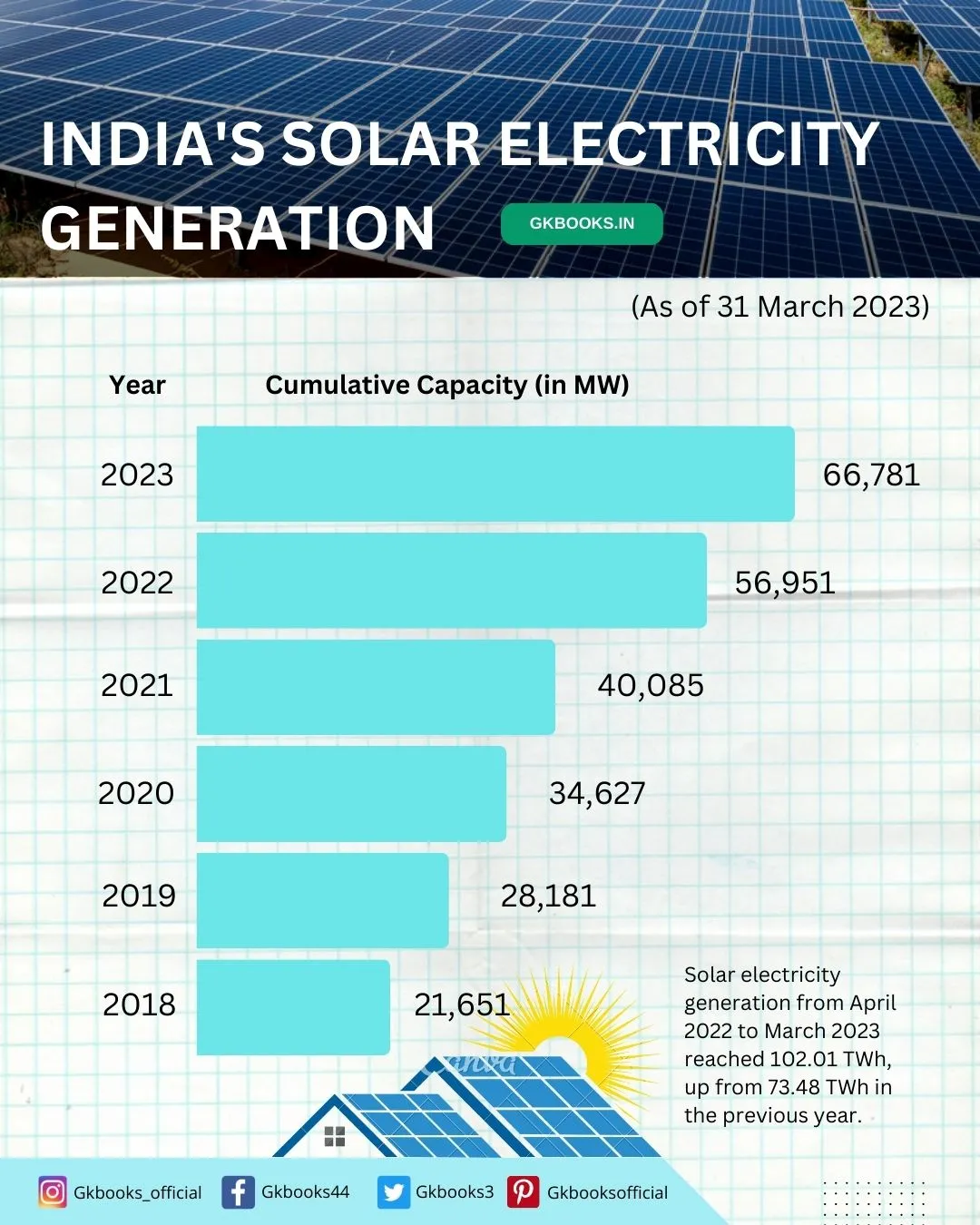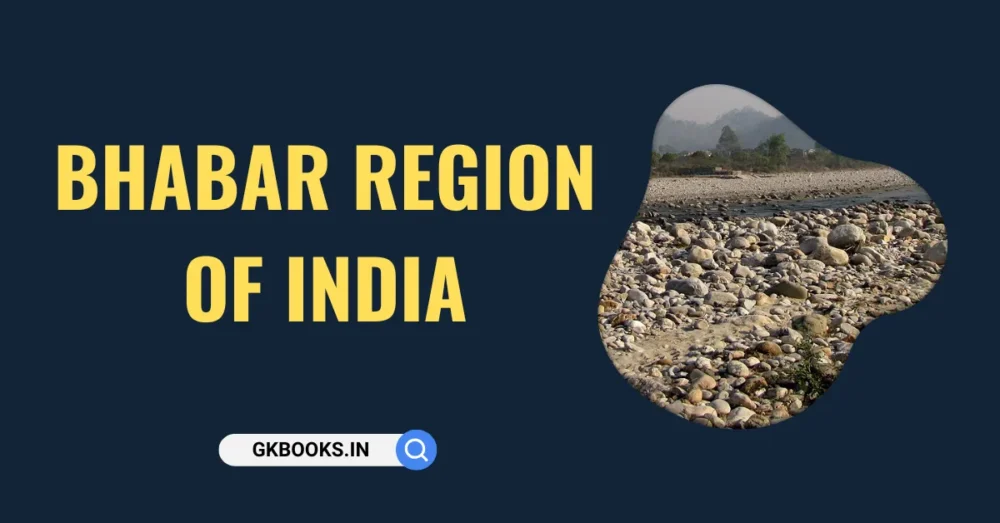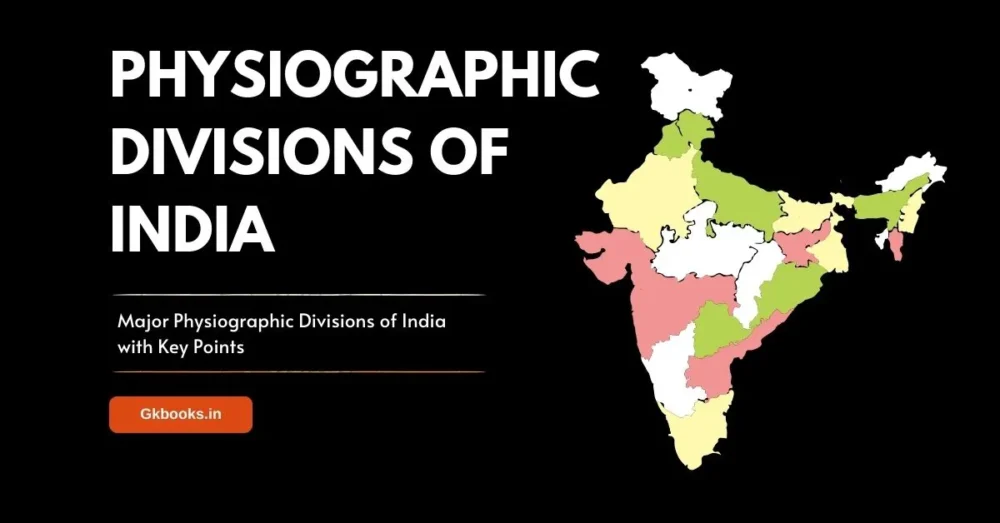Explore the comprehensive list of solar power plants in India in 2024 with key facts. Stay informed about the latest developments in renewable energy sectors in India.
Introduction
As of 31 December 2023, India’s solar power installed capacity stood at 73.32 GWAC.
From 2010 to 2019, approximately US$20.7 billion of foreign capital was invested in solar power projects in India. For FY2023-24, India plans to release tenders for 40 GW of solar and hybrid projects.
India has set up around 42 solar parks to support solar plant developers, ensuring ample land availability.
The International Solar Alliance (ISA), founded by India, has its headquarters in the country. India has also introduced visionary initiatives like “One Sun One World One Grid” and “World Solar Bank” to leverage solar power globally.
Solar Power Plants in India 2024 List
| Plant | State | DC peak power (MW) | Commissioned |
|---|---|---|---|
| Bhadla Solar Park | Rajasthan | 2,245 | 2020 |
| Pavagada Solar Park | Karnataka | 2,050 | 2019 |
| Kurnool Ultra Mega Solar Park | Andhra Pradesh | 1,000 | 2017 |
| NP Kunta | Andhra Pradesh | 978 | 2021 |
| Charanka Solar Park | Gujarat | 690 | 2012 |
| Kamuthi Solar Power Project | Tamil Nadu | 648 | 2017 |
| Galiveedu solar park | Andhra Pradesh | 400 | 2020 |
| Mandsaur Solar Farm | Madhya Pradesh | 250 | 2017 |
| Kadapa Ultra Mega Solar Park | Andhra Pradesh | 250 | 2020 |
| Welspun Solar MP project | Madhya Pradesh | 151 | 2014 |
| Neyveli Solar Power Project | Tamil Nadu | 130 | 2018 |
| Sakri solar plant | Maharashtra | 125 | 2013 |
| Dhursar Solar Plant | Jaisalmer, Rajasthan | 125 | 2016 |
| Jalaun Solar Power Project | Uttar Pradesh | 50 | 2016 |
| Bitta Solar Power Plant | Gujarat | 40 | 2012 |
| Dhirubhai Ambani Solar Park, Pokhran | Rajasthan | 40 | 2012 |
| Rajasthan Photovoltaic Plant | Rajasthan | 35 | 2013 |
| Moser Baer, Patan district | Gujarat | 30 | 2011 |
| Lalitpur Solar Power Project | Uttar Pradesh | 30 | 2015 |
| Mithapur Solar Power Plant | Gujarat | 25 | 2012 |
| Vankal Solar Park | Mizoram | 20 | 2023 |

State-wise Solar Power Plants Facts
Andhra Pradesh
- Andhra Pradesh has abundant pumped hydro storage to make solar power available 24/7 and plans to build 33,000 MW of pumped storage projects.
- The state has two major solar power plants. The Kurnool Ultra Mega Solar Park (1000 MW), is located in the Kurnool district of Andhra Pradesh.
- Additionally, the Mudasarlova Reservoir Floating Solar Project (Visakhapatnam), with a capacity of 2 MW, showcases innovative utilization of water bodies for solar energy generation.
Delhi
- Due to its small size, Delhi focuses on rooftop solar plants instead of ground-based ones.
- Thanks to its net metering system, Delhi is a leader in rooftop solar installations.
- The Rajghat thermal power plant will be shut down and converted into a 5 MW solar power plant.
Gujarat
- Gujarat is blessed with abundant sunshine, vast expanses of vacant land, and robust connectivity for power transmission and distribution.
- The state’s commitment to solar power is evident in its 2009 Solar Power policy framework, financing mechanisms, and incentives. These have fostered a green investment climate and ambitious grid-connected solar power targets.
- Gandhinagar is being transformed into a solar city through rooftop solar power generation in government and private buildings.
- Gujarat is utilizing solar panels along Narmada irrigation canals to generate power. The 1 MW Canal Solar Power Project near Chandrasan village is a pilot for reducing water evaporation.
- Dudhala village in Amreli showcases the success of a 450 kW solar rooftop project, providing clean energy to households and public areas. This initiative serves as a model for sustainable energy adoption in rural India.
Haryana
- The 2016 Haryana solar power policy offers a variety of incentives to promote solar energy in the state.
- Farmers receive a 90% subsidy for solar-powered water pumps.
- The policy also offers financial incentives for adopting solar street lighting, home lighting solutions, solar water heating systems, and solar cookers.
- New residential buildings exceeding 500 square yards must install 3% to 5% solar capacity.
- Additionally, loans up to ₹10 lakh are available to homeowners for solar installations.
- Haryana offers a significant advantage by providing a 100% waiver on various electricity charges for rooftop solar projects, including taxes, cess, duty, wheeling charges, and transmission & distribution costs.
Karnataka
- The Pavagada Solar Park, with a capacity of 2050 MW, was the world’s biggest solar park at the end of 2019.
Kerala
- Cochin International Airport is the first in India to run completely on solar power (thanks to the CIAL solar farm).
- Plans for new solar power plants in Idukki, Wayanad, Malappuram, and Palakkad districts.
- Kerala’s first solar park is located in Perla, Kasaragod.
- Floating solar parks are under construction and partly operational in Banasura Sagar, Idukki Dam, and Vembanad Lake.
Madhya Pradesh
- The Welspun Solar MP project, which stands as the largest solar power plant in the state, was constructed at a total cost of ₹11 billion (equivalent to US$140 million) on a sprawling 305 hectares of land.
- Prime Minister Narendra Modi inaugurated a 130 MW solar power plant project located in Bhagwanpura village, situated in the Neemuch district.
- Welspun Energy ranks among the top three companies in India’s renewable energy sector.
- The Rewa Ultra Mega Solar plant in Rewa district, a 750 MW solar power plant, was inaugurated on July 10, 2020.
- Madhya Pradesh I, a 200 MW power plant, is under construction near Surajpur Village in the Shajapur district of Madhya Pradesh.
Maharashtra
- The 125-MW Sakri solar plant is the largest solar power plant in Maharashtra.
- The Shri Saibaba Sansthan Trust has the world’s largest solar steam system, constructed at the Shirdi shrine.
- The solar steam system cooks 50,000 daily meals for pilgrims, saving 100,000 kg of cooking gas annually.
- It can generate steam for cooking even without electricity to run the circulating pump and has a design life of 25 years.
- The Osmanabad region in Maharashtra is rich in sunlight and ranked the third-best region in India for solar insolation.
Rajasthan
- The state hosts the world’s largest Fresnel type 125 MW CSP plant at the Dhirubhai Ambani Solar Park.
- Jodhpur district leads Rajasthan with an installed capacity of over 1,500 MW, followed by Jaisalmer and Bikaner.
- The Bhadla Solar Park has a total installed capacity of 2,245 MW, making it the largest solar plant globally.
- India’s only tower-type solar thermal power plant (2.5 MW) is located in Bikaner district, Rajasthan.
- Rajasthan became the first state in India to achieve 10 GW of solar power capacity.
- The state aims to reach a capacity of 30 GW by the Financial Year 2024-2025 and 75 GW by 2030.
Mizoram
- Vankal Solar Park is the largest solar park in Mizoram.
Tamil Nadu
- Tamil Nadu ranked 5th in India for operating solar power capacity.
- The 648-MW Kamuthi Solar Power Project is the largest operating project in Tamil Nadu.
- On January 1, 2018, NLC India Limited (NLCIL) successfully commissioned a new 130 MW solar power project in Neyveli.
Telangana
- Telangana ranks sixth in solar energy generation capacity in India.
- Bharat Heavy Electricals Limited (BHEL) built a 100 MW floating solar PV plant on NTPC’s Ramagundam water supply reservoir.
- The NTPC’s 100 MW floating solar photovoltaic (PV) project became India’s largest floating solar plant.
India’s Solar Electricity Generation
- India’s total installed solar power capacity is 66.78 GWAC.
- Solar electricity generation from April 2022 to March 2023 reached 102.01 TWh, up from 73.48 TWh in the previous year.

Solar Energy Target of India
India is leading the fight against climate change by setting a massive goal: achieving 500 GW of renewable energy capacity by 2030, with solar power playing a starring role in a targeted contribution of 448 GW.
This audacious target aligns with Prime Minister Modi’s five-point pledge at the COP26 climate talks, showcasing India’s commitment to a sustainable future.
The country has already made significant strides in solar energy. Installed solar capacity skyrocketed from 21,651 MW in 2018 to a remarkable 70,096 MW by 2023, and this momentum is expected to continue.
Projections indicate a substantial increase, from 15 GW added in the last fiscal year to a staggering 40 GW by 2024-25.
Experts are even optimistic about exceeding the 500 GW target. Ajay Mathur, Director General of the International Solar Alliance, believes declining battery prices by 2025 could pave the way for widespread adoption of solar-battery storage solutions, further accelerating clean energy use.
Credible reports by ICRA and CareEdge Ratings support this optimistic outlook. ICRA predicts India’s renewable energy capacity will reach a significant 170 GW by March 2025, fueled by strong government policies and a decline in solar module prices. Similarly, CareEdge Ratings forecasts an additional 45 GW of renewable energy by 2025.
The ambitious Solar Park Scheme further solidifies the Indian government’s dedication to solar energy. This initiative aims to establish a network of 50 large-scale solar parks, each with a minimum capacity of 500 MW, contributing a cumulative capacity of around 38 GW by 2025-26.
India’s focus on solar energy is a beacon of hope in the global fight against climate change. By exceeding its target and promoting clean energy solutions, India can inspire other nations to embrace a sustainable future powered by the sun.
Renewable Energy Target of India
India is the world’s fourth-largest consumer of electricity and the third-largest renewable energy producer.
In 2022, 40% of India’s energy capacity (160 GW out of 400 GW) came from renewable sources.
In the fiscal year 2023-24, India plans to issue tenders for 50 GW of wind, solar, and hybrid projects.
India has committed to achieving 500 GW of renewable energy capacity by 2030.
India’s installed renewable energy capacity has steadily increased, from 94.4 GW in 2021 to 119.1 GW in 2023 (as of Q4).
In line with the Paris Agreement’s Intended Nationally Determined Contributions (INDCs) targets, India aims to produce 50% of its total electricity from non-fossil fuel sources by 2030.
The Central Electricity Authority of India set a similar target of producing 50% of total electricity from non-fossil fuel sources by 2030 in 2018.
India has set intermediate targets of producing 175 GW by 2022 and 500 GW by 2030 from renewable energy sources.
What percentage of India’s energy is solar?
India’s solar power is on the rise! As of January 2024, it accounts for a significant 17% of the country’s installed power capacity.
While that number is impressive, it’s important to note that solar energy also leads the charge within the renewable energy sector, making up over half (52%) of India’s total renewable energy sources. This puts solar far ahead of other renewables like wind (35%), bio-power (9%), and small hydro (4%).
Despite this impressive growth, there’s still room for even more solar panels. Currently, only about 3% of Indian households utilize this clean energy source.
The government is actively working to change that through initiatives like the Jawaharlal Nehru National Solar Mission and the Kisan Urja Suraksha evam Utthaan Mahabhiyan, which aim to promote the wider adoption of solar energy.
Where does India rank in solar energy?
According to Nasdaq, India sits proudly in fifth place in this global ranking of solar energy with a cumulative installed capacity of 62.80 GW at the end of 2022.
It’s worth noting that India is also the world’s third-largest producer of renewable energy overall, boasting an impressive 40% renewable energy capacity in 2022.
China reigns supreme in solar energy with a whopping 130.4 GW capacity, several other countries are making significant strides. The United States comes in second with 85.3 GW, followed closely by Japan at 63.3 GW.
Which state of India has the highest solar energy?
The state of Rajasthan is leading the way in solar energy in India. It has the highest potential for generating solar power, with enough sunlight to produce up to 142.31 gigawatts of electricity.
Rajasthan’s solar projects are already producing around 17.8 gigawatts of solar energy, showing how much power can be generated from the sun there.
Additionally, Rajasthan has the most ground-mounted solar power plants in the country, with a total capacity of 14 gigawatts.
One of its standout projects is the Bhadla Solar Park, located in the Bhadla village of the Jodhpur district, India’s largest solar power plant.
What is the future of solar in India?
India is basking in the bright future of solar energy. With ambitious government targets and a booming solar sector, the country is poised to become a global leader in clean energy.
Fueled by a government push towards renewable energy, falling solar equipment costs, and surging consumer demand, India’s solar capacity is expected to witness a monumental leap.
The 14th National Electricity Plan (NEP 14) outlines a roadmap for achieving a staggering 185.6 GW by 2026-27 and a mind-blowing 364.6 GW by 2031-32.
The International Energy Agency (IEA) echoes this optimism, forecasting a potential to reach a phenomenal 800 GW by 2050, which could power nearly half of the nation’s electricity needs!
Beyond large-scale solar parks (currently at nearly 42), India also fosters rooftop solar installations and explores innovative solutions like solar energy storage. These advancements, coupled with initiatives like the Production Linked Incentive (PLI) scheme, will further accelerate India’s solar journey.
India’s vision extends beyond its borders. The “One Sun One World One Grid” and “World Solar Bank” concepts showcase the country’s commitment to global clean energy collaboration. By harnessing the abundant solar power globally, India aspires to illuminate a brighter future for all.
Key Points About The Solar Power Plants in India
- Rajasthan leads in solar energy production in India.
- Bhadla Solar Park in Rajasthan holds the title of being the largest solar park in the world.
- Rajasthan was the first Indian state to achieve a solar power capacity of 10 GW.
- NTPC’s Ramagundam hosts India’s largest floating solar power plant.
- India has approximately 42 large-scale solar power plants.
- Indian Prime Minister Narendra Modi introduced the One Sun, One World, One Grid (OSOWOG) initiative at the inaugural session of the International Solar Alliance (ISA).
- The headquarters of the International Solar Alliance (ISA) is located in Gurugram, Haryana.
- India ranks fifth globally in terms of solar energy capacity, as per Nasdaq.
- China holds the title of being the world’s largest producer of solar energy.
- India aims to achieve a renewable energy capacity of 500 GW by 2030.
- The Kamuthi Solar Power Project is the largest operating solar project in Tamil Nadu.
- Vankal Solar Park is the largest solar park in Mizoram.
- The Sakri solar plant, with a capacity of 125 MW, is the largest in Maharashtra.
- The Shri Saibaba Sansthan Trust boasts the world’s largest solar steam system at the Shirdi shrine.
- Cochin International Airport is India’s first airport to operate entirely on solar power.
- Delhi leads in rooftop solar installations.
FAQs on Solar Power Plants in India
The first floating solar power plant in Bihar has been constructed in the Darbhanga district. This innovative project, commissioned by the Bihar Government, is a 2-megawatt (MW) unit over a six-acre water body.
India (Bhadla Solar Park Rajasthan)
India has 42 large-scale Solar Parks.
Rajasthan.
Telangana
Bharat Heavy Electricals Limited (BHEL).
Explore More on Indian Geography:
Renuka Lake: Key Details about Smallest Ramsar Wetland Sites of India
Keibul Lamjao National Park: The World’s Only Floating National Park
Brahmaputra River System, Tributaries, Map, Origin, Length: Complete Notes
Bhabar Region of India: Features, Importance, and Unique Geography
Surajkund Lake: Facts, History, and Significance for GK Notes




